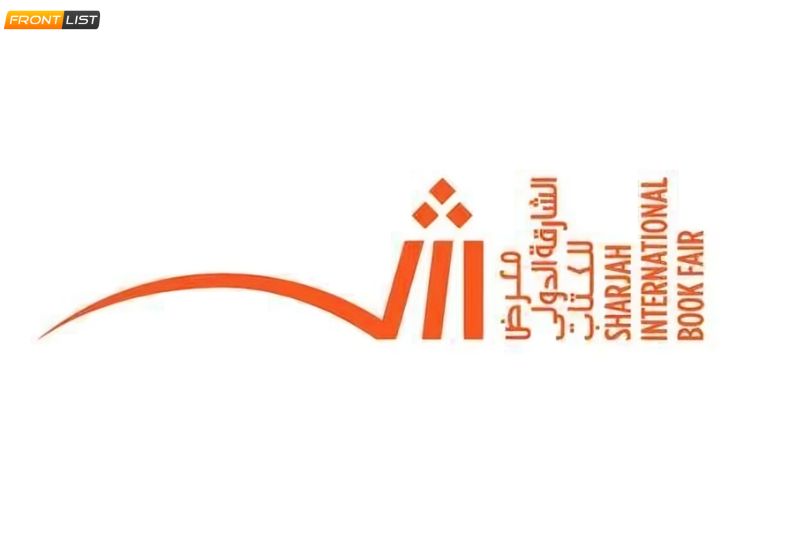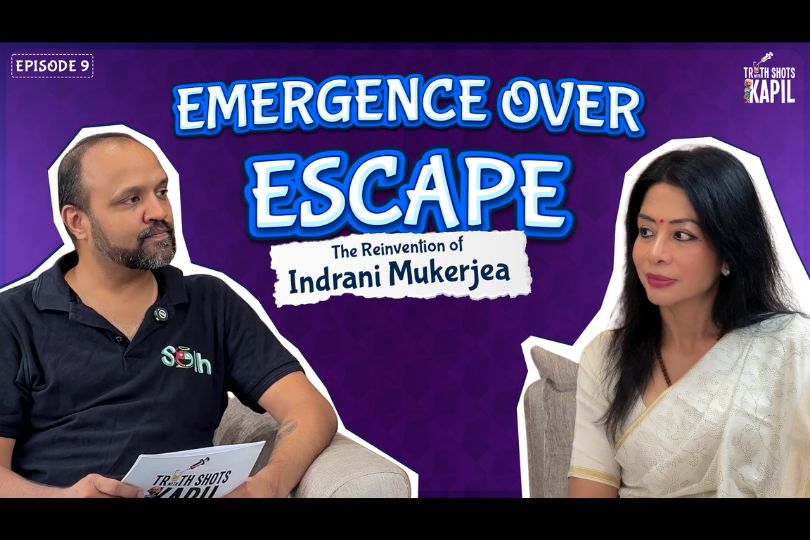Rajesh Talwar speaks with Frontlist on his book "The Boy Who Wrote a Constitution"
on Apr 26, 2022
Rajesh Talwar has written thirty-two books, which include novels, children’s books, plays, self-help books and non-fiction books covering issues in social justice, culture and law. He has practiced law, taught at university, and also worked in senior positions with the United Nations. He is a British Chevening scholar and the recipient of an Honorary Citizenship Certificate from the Mayor of Tulsa (Oklahoma). He has been interviewed by The New York Times on the state of law and justice in India. He has studied for shorter and longer durations at various universities including Delhi University, Nottingham, Oxford, Cambridge and Harvard.
The Boy Who Wrote a Constitution is his sixth book for children. Rajesh has contributed to the Economic Times, The Guardian (UK), the Pioneer, the Times of India NIE, The Patriot, Manushi, the Sunday Mail and the New Indian Express. He is a sought-after speaker at literary festivals across the country.
Frontlist- Your play is a fact-based drama on Dr Bhimrao Ramji Ambedkar’s childhood memories. Where did you get all the relevant information regarding the same?
Much of the material used in the play is based on Ambedkar’s own revelations about seminal events in his life. I have written two other historical plays, including one on Aurangzeb. In my experience it’s always best to go to the original source to avoid any distortions that may emerge in a second person account. For this reason, I have drawn heavily on Ambedkar’s memorable essay Waiting for a Visa. I have also used material from Ambedkar’s authorized biography and other writings about him. I have tried to stay true to the events as they historically occurred but since this is to be read and enacted by children it needs to be lively and engaging. For this reason, I have taken a degree of artistic liberty in the portrayal of the incidents in Babasaheb’s life. Many times, I have used Ambedkar’s own words, in order to make the play is as authentic as possible. For the benefit of the more circumspect reader, I have frequently put in endnotes providing appropriate references, so that the reader does not feel that his intellect is being manipulated in any fashion, and he can easily cross-check the facts should he wish to do so.
I was also careful not to write an introduction or preface that might influence the mind of the child, parent or other person who might be reading the play. For this reason, unlike the case with most of my other plays – this is my eleventh play – I decided to include a postface at the end of the book, instead of a preface at the outset.
Frontlist -This book conveys to the children the challenging boyhood and grown-up years of Dr Ambedkar, who wrote the Constitution of India and became India’s first Law & Justice Minister. Could you please share some facts about his life that readers don't know before?
Let me start by speaking here of Ambedkar’s life experiences in the context of the right to be able to drink water from a public source. That should be a given, should it not? There is focus in the play on a citizen’s right to drink water from a public well, tank or lake. For this reason, the play’s subtitle is titled ‘A Play for Children on Human Rights’. Three scenes based on Ambedkar’s life history focus on the difficulty experienced by Dalits in accessing water from sources that are available to everyone else. In school, young Bhim experiences difficulty in drinking water, which is available to all other non-Dalit students. At the Daulatabad Fort, he and his Dalit friends are set upon by some Muslims who object to their drinking water from a public tank because they are Dalits. Finally, there is a scene that dramatizes the Mahad Satyagraha in which Ambedkar leads thousands of Dalits to the Chowdar Lake for them to drink water just like anyone else.
Our other national leaders be it Gandhi, Bose or Nehru did not face any real struggles in their childhood. Ambedkar did not even have money to pay his school fees. As a child, Gandhi experimented with non-vegetarian food when he came under the influence of a Muslim boy in his class, but otherwise his childhood is not particularly interesting. That’s why perhaps although so much has been written about the Mahatma no one ever thought of written a play titled ‘The Boy Who Would Become a Mahatma.’ Between Gandhi, Nehru and Bose, Bose had a more interesting childhood perhaps but Bose’s childhood is also not comparable with Ambedkar’s.
Frontlist- Dr B R Ambedkar had a difficult time in his childhood because of caste discrimination. Do you think it still happens nowadays?
Absolutely. There is no question. In fact, this is a question one of the children poses to Milan one of the other boys. Milan takes out a recent newspaper cutting to show the continued difficulties faced by Dalits, including by Dalit children.
Not only have Dalits not been appreciated, historically they have been looked upon by the other castes with disgust and revulsion. This terrible situation continues. The untouchable is cleaning up your filth, but instead of appreciating him and being grateful to him for doing things that you yourself find difficult, there are those amongst us who still think of the Dalit as someone dirty, whose mere touch would pollute him and render him untouchable. Dalits were and are asked to live on the outskirts of the village, they are not allowed to use the well that is used by the rest of the community, and the men, women and children are repeatedly abused by so-called high and middle castes. And if anyone among them should dare to protest, in many parts of the country they will still be beaten publicly and humiliated. Every few weeks we read reports of a Dalit woman being raped in a northern state
Frontlist- How did Dr Ambedkar’s actions influence the people in his life?
Ambedkar fought hard all his life against discrimination. Possibly two of his great achievements that still resonate with Dalits till this day, is the burning of the Manusmriti which preached discrimination against the Dalits, and the carrying out of the Mahad Satyagraha. It is interesting, you know, that the world knows about Gandhi’s famous Dandi March in 1930 to protest the salt tax imposed by the British. But far fewer people around the world, including in India, know that three years before Gandhi’s march, in 1927, Ambedkar undertook a march to the Chowdar Lake at Mahad. Gandhi fought for Dalit rights, it is true, but if we are to be perfectly honest, we have to admit that for many years the Mahatma was himself unclear on the issue of caste and caste discrimination. Ambedkar was also more of a realist than Gandhi. I believe that had the Congress and Gandhi listened to him more, much of the post-partition violence and bloodletting that took place could have been mitigated. Ambedkar also understood that having a great Constitution was by itself no guarantee that the rights enshrined within would be enforced.
Frontlist- What are some of the strongest instances that happened in Dr Ambedkar’s life that you have mentioned in the story?
I have included a hard-hitting scene where young Bhim is made to sit at the end of the class on a piece of sack unlike the other children, who have proper chairs to sit on. The same scene shows how in school it is not even easy for him to even drink water, forget about eating food. Ambedkar himself writes in his biography that he could only drink water if there was a peon who could open the school tap for him. And if that peon was not available for some reason, he could not drink water. Four words, Ambedkar writes, summed up his situation: No peon, no water.
I have also included reference to a little-known life-changing train journey that Ambedkar undertook while yet a child. The world is aware of Mahatma Gandhi’s train journey in South Africa where he was thrown out of a compartment despite possessing a first-class ticket. In comparison, even in India, far fewer people are aware of a similar, hugely significant train journey that Ambedkar undertook with his siblings while he was yet a child. If Gandhi’s famed train episode in South Africa exposed the racial bias of the colonizers, Babasaheb’s journey exposed the terrible evil of caste that has afflicted India for centuries. The colonizers have long since left but caste, and caste discrimination continues to afflict the Indian nation like an incurable virus.
Upon his return to India Ambedkar decides to work for the Maharaja of Baroda who financed his overseas education. The struggles he faces as a young man just to find accommodation are heart wrenching. He stays for a few days at a Parsi guest house but then the Parsis ask him to leave because he is a Dalit. He approaches a Hindu friend to stay with him for a few days, till such time that his official accommodation gets arranged but the friend refuses because his cook is a Saraswat Brahmin. He then approaches a Christian friend, who also refuses because his wife was a Brahmin before her family converted and became Christian. Those Christians still retained some of their original prejudices. Can you imagine? At length Ambedkar comes to the realization that every community in India that is not Dalit itself discriminates against the Dalit be it the Hindus, the Muslims, the Christians or even the Parsis.
Frontlist- How has your journey been so far as an author? What are the changes you have seen in the publishing industry?
I have written 32 odd books in different genres, including plays, children’s books, self-help books, novels and so on and forth. This is my sixth children’s book. Some of my books have been published by big names in the industry such as Juggernaut, Hay House and Orient BlackSwan. Others have been published by relatively small players. One of the big changes that has taken place over the past couple of decades is the rise of the e-book together with self-publishing or Indie publishing. According to recent figures it appears that as much as thirty percent of all sales of e-books take place in Indie publishing. In the past, big publishers as well as some big authors would privately sneer at the small publisher. Today, this is not possible. The scenario has completely changed and will continue to change.
The other thing I have discovered over time that it is not necessarily the case that big names will treat your final product with greater care. Yes, most of the time it is a huge asset for any author to have a big publisher back his book, but this is not always the case. For instance, I have two writer friends who have had terrible book covers designed by big names in the publishing world. Unfortunately, they were not experienced enough to have kept some oversight over the process. Increasingly, the writer needs to take greater control, and not just trust that he has written the book and now everything else will be done by the publisher.
There is even a sad case of an author I know who spent five years researching a very important historical subject and then finally she found a big publisher after a year or so. Her experience with this publisher was terrible. Firstly, they made her wait for as long as three years before finally releasing the title. Secondly, the cover design was very pedestrian. As a relatively new, inexperienced writer, she did not realize at the time how important book covers can be. Thirdly, she had chosen a generic title, not realizing that in this age of the Internet for your book to stand out it must have a distinctive title so that it shows up in a google search. This was of course her own mistake but one would have expected a big publisher to have had an experienced editor who could have guided and advised her to choose another title. Finally, the publisher did not invest in publicity at all and so the book when it was released was left unnoticed by the media. She was left anguished by how after all those years of effort her book was ignored despite being on an important subject.



.jpg)






.jpg)

.jpg)
.jpg)
.jpg)
.jpg)


.jpg)
.jpg)









Sorry! No comment found for this post.